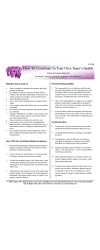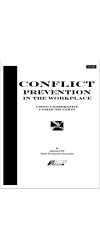In a previous article we discussed the plight of Mary Duncan, Director of the Income Security Branch, who had to contend with John, the human speed bump. John’s tended to shoot holes in new ideas, procrastinate, and generally hold to the status quo. If only that was Mary’s only problem person!
Jennifer is a human road runner. She is almost the exact opposite of John. Where John is slow, Jennifer is fast. Where John needs considerable time to make decisions, and requires oodles of information before even considering an issue, Jennifer requires little or no information to make decisions. Where John hardly moves at all, Jennifer the human road runner, is almost reckless, often not considering the impact of her decisions on her customers and those around her.
What practical impact has this had? Last week Mary, the Director, had to deal with the Minister’s office regarding some off the cuff comments that Jennifer made to the press. A few months prior to that, Jennifer, in her attempt to streamline office procedure, designed a new system, sold it vigorously, and when it was implemented, it created many more problems then it solved.
Human Road Runner Behaviour
Many human road runners do not go “Meep, Meep”, but they do tend to share some common behavioral traits. Here are some behaviours commonly used by human road runners:
enjoy change for change sake
are impatient with problem analysis procedures, particularly in others, and view them as shilly-shallying, sometimes saying so publicly.
tend to push for action/implementation without considering possible negative side-effects.
tend to give unbalanced positive side of positions they endorse, particularly their own.
in their enthusiasm and excitement, tend to overlook involving people that should be involved in projects, including their superiors.
Road Runner Fallout
While the excitement and energy a road runner brings to the job is a plus, like the cartoon character the road runner tends to kick up a lot of dust that others have to clean up. For example road runners tend to:
disrupt reasoned discussion at meetings, because they consider it just more talk to avoid action.
when allowed to act unchecked, can make ill-thought out decisions that affect others.
can slow down change, by virtue of the mistakes they can create, resulting in having to redo the work.
can become performance problems due to the errors they generate
can be perceived as loose cannons, often because of their impatience.
Road Runner Upsides
What the road runner brings to the job is an excitement and energy level that can be healthy in an organization. While road runners may over-react to reasonable analysis and discussion, they can also be useful as organizational canaries, sniffing out when the process has become overly lengthy and counter-productive. They can be innovative and creative, good at generating ideas, though they may not be as good at identifying the problems with their own ideas. They can even be good leaders, provided they develop an understanding/respect of other people.
Dealing With The Road Runner
As with last month’s human speed bump, we will assume that your road runner is a competent employee. What we need to remember is that road runners, while seeming to be undedicated, may in fact be very dedicated, but act ineffectively at times.
First off, we need to make sure that the road runner understands the “rules of the road”. Since the road runner tends towards freelancing, and taking the bull by the horns without checking things out with others, a good first step is to talk with the road runner privately, recognizing contributions while at the same time, making expectations clear. For example, Mary spoke to Jennifer as follows:
“Jennifer, we all appreciate the enthusiasm and creativity you have brought to the Branch. Over the last few years, you have come up with some of the best ideas for change, and we have all benefits. I need to remind you though that we succeed or fail as a team, and that means we need to talk to each other. I know it gets frustrating to deal with what seems like the slow pace around here, so I would like to hear any suggestions you might have to speed some of the changes up, but without leaving people out, or making mistakes. Have you got any ideas off the top of your head?
Notice that Mary is recognizing Jennifer’s contributions AND frustration, while at the same time putting the ball back in Jennifer’s court. If Jennifer is to change some of her behaviour, it would be best if she came up with the suggestions herself.
With human speed bumps, we try to utilize their strengths; the ability to analyze and evaluate both sides on an issue. With a road runner, we suggest that task assignments focus on their weaknesses, until such time as s/he demonstrates this is ineffective. In practical terms, we are going to ask the road runner to do the same thing we ask of the speed bump — to analyze both sides of a position; to critically examine their own ideas, or those of others. The reason we do this is it is unlikely we can change a speed bump to operate faster and less cautiously, but we may be able to get a road runner to slow down and become more reflective.
Since road runners can inspire others with their energy and enthusiasm, they can be put in leadership roles, provided they are not given too much autonomy. When road runners are in lead roles, it is important to specify regular contact/reporting times to ensure that the road runner doesn’t go ahead with something that could be disastrous.
Finally, pairing up a road runner with a speed bump, while seeming to be a good idea, is not a good idea. While one might hope that they might learn from each other and take the best from each other, the opposite tends to happen. The road runner will perceive the speed bump as slow and dense, while the speed bump will see the road runner as childish, impulsive and equally stupid. The outcome can be a war, where other people also get shot at.
Conclusion:
Road runners can be managed. Organizations can prosper with both road runners and speed bumps, but we need to be aware of the strengths and weaknesses of both. With the speed bump, we seek to harness his or her skills, and use them. With the road runner, we want to help them develop reflective skills, and understanding of organizational expectations, so that they can rein in their impulses.
Code: Mxyzpickle






